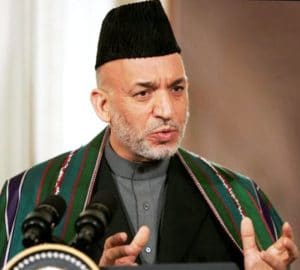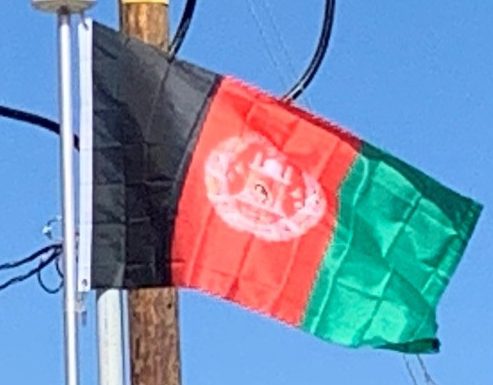On 9 September 2001, Massoud was assassinated by two Arab suicide attackers in Panjshir province of Afghanistan. Two days later, the September 11 attacks were carried out in the United States. The US government suspected Osama bin Laden as the perpetrator of the attacks, and demanded that the Taliban hand him over. The Taliban offered to hand over Bin Laden to a third country for trial, but not directly to the US. Washington refused that offer. Instead, the US launched the October 2001 Operation Enduring Freedom. The majority of Afghans supported the American invasion of their country. During the initial invasion, US and UK forces bombed al-Qaeda training camps. The United States began working with the Northern Alliance to remove the Taliban from power.
Recent history (2002–Present):
In December 2001, after the Taliban government was overthrown in the Battle of Tora Bora, the Afghan Interim Administration under Hamid Karzai was formed, in which process the Taliban were typecast as ‘the bad guys’ and left out. The International Security Assistance Force (ISAF) was established by the UN Security Council to help assist the Karzai administration and provide basic security. Taliban forces meanwhile began regrouping inside Pakistan, while more coalition troops entered Afghanistan and began rebuilding the war-torn country.
Shortly after their fall from power, the Taliban began an insurgency to regain control of Afghanistan. Over the next decade, ISAF and Afghan troops led many offensives against the Taliban, but failed to fully defeat them. Afghanistan remains one of the poorest countries in the world due to a lack of foreign investment, government corruption, and the Taliban insurgency.
Meanwhile, the Afghan government was able to build some democratic structures, and the country changed its name to the Islamic Republic of Afghanistan. Attempts were made, often with the support of foreign donor countries, to improve the country’s economy, healthcare, education, transport, and agriculture. ISAF forces also began to train the Afghan National Security Forces.
In the decade following 2002, over five million Afghans were repatriated, including some who were deported from Western countries.

By 2009, a Taliban-led shadow government began to form in parts of the country. In 2010, President Karzai attempted to hold peace negotiations with the Taliban leaders, but the rebel group refused to attend until mid-2015 when the Taliban supreme leader finally decided to back the peace talks.
After the May 2011 death of Osama bin Laden in Pakistan, many prominent Afghan figures were assassinated. Afghanistan–Pakistan border skirmishes intensified and many large scale attacks by the Pakistan-based Haqqani Network also took place across Afghanistan. The United States blamed rogue elements within the Pakistani government for the increased attacks.
In September 2014 Ashraf Ghani became President after the 2014 presidential election where for the first time in Afghanistan’s history power was democratically transferred. On 28 December 2014, NATO formally ended ISAF combat operations in Afghanistan and officially transferred full security responsibility to the Afghan government and the NATO-led Operation Resolute Support was formed the same day as a successor to ISAF. However, thousands of NATO troops have remained in the country to train and advise Afghan government forces and continue their fight against the Taliban, which remains by far the largest single group fighting against the Afghan government and foreign troops. Hundreds of thousands of insurgents, Afghan civilians and government forces have been made casualty by the war.
Geography:
A landlocked mountainous country with plains in the north and southwest, Afghanistan is located within South Asia and Central Asia. The country’s highest point is Noshaq, at 24,580 feet above sea level. It has a continental climate with harsh winters in the central highlands, the glaciated northeast, and the Wakhan Corridor, where the average temperature in January is below 5 °F, and hot summers in the low-lying areas of the Sistan Basin of the southwest, the Jalalabad basin in the east, and the Turkestan plains along the Amu River in the north, where temperatures average over 95 °F in July. The lowest point lies in Jowzjan Province along the Amu River bank, at 846 ft above sea level.
